Video exampler: coming soon…
Video tutorial: coming soon…
Recommended prerequisites: cartwheel
Description: The southpaw cartwheel is brother to the orthodox cartwheel. It’s a one-handed cartwheel version that makes use of the traditional second (trailing) arm instead of the first. It shares a lot of similarities to the orthodox cartwheel, so be sure to check that tutorial out. I won’t say it’s a prerequesite, but it’s similar enough to deserve a peek.
Slide by slide breakdown
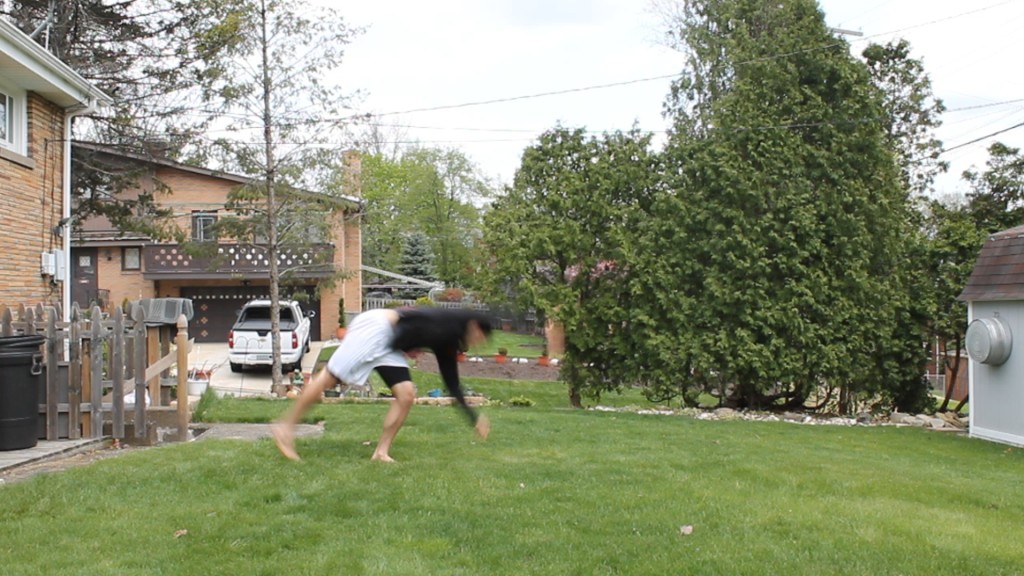
For the takeoff, see either the cartwheel or the orthodox cartwheel or the hand releasing cartwheel. We enter here in a similar situation: hands high (trailing arm beginning the slink, ho ho ho!), leg lifting with some vitality. Nothing should be surprising.
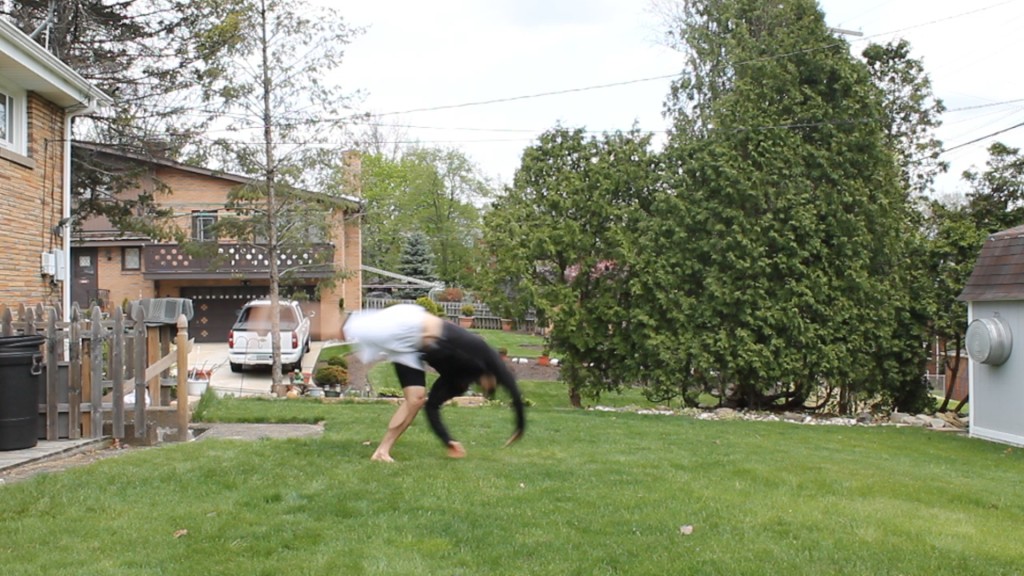
Here’s where things get interesting. In the orthodox cartwheel, I pulled a fast one on my trailing arm. I made it think it was going to touch the ground, but just hovered it above the ground. We’re in much of the same territory here — look how close my first hand is to the ground! It’s dangerously cheesy to the ground. And because that first hand is going to miss the ground, my second hand is in a rush to do business. Make sure it follows it’s normal cartwheel rules and starts to open up the shoulders.
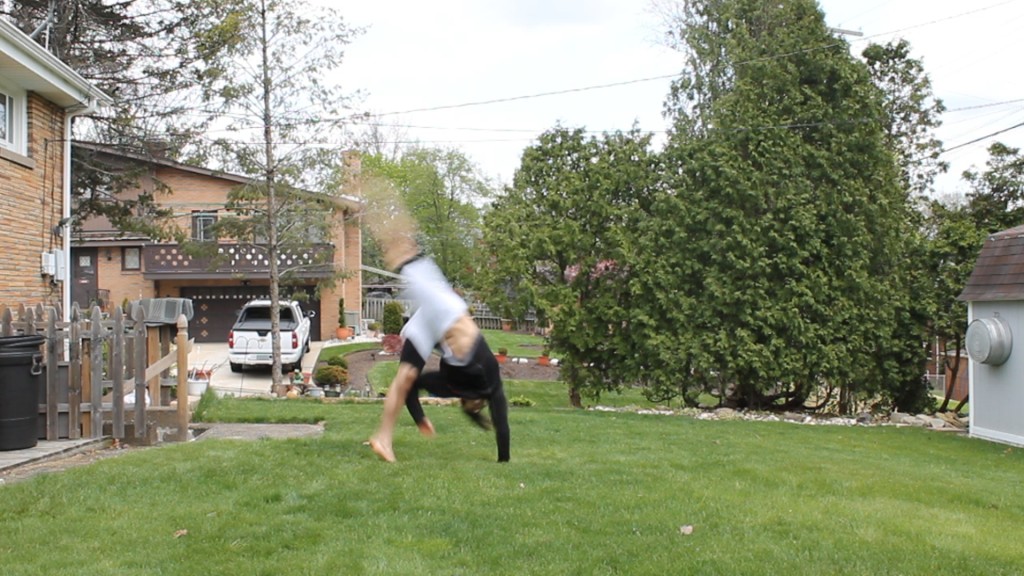
Unlike in the orthodox cartwheel, the hand doesn’t just hover over the ground for long. In the slide above, the hand looks eerily like it does in an aerial at times. Try not to let that elbow stray too far from your leg. What I mean by that: in the slide above, keep your arm closer to your leg rather than closer to the truck in the background.
Also take not of my head. My eyes are leading the way. But that lead arm. There’s more to say about it. But I’m not sure I can type anything the slides won’t show you — it’s hard to explain via text.
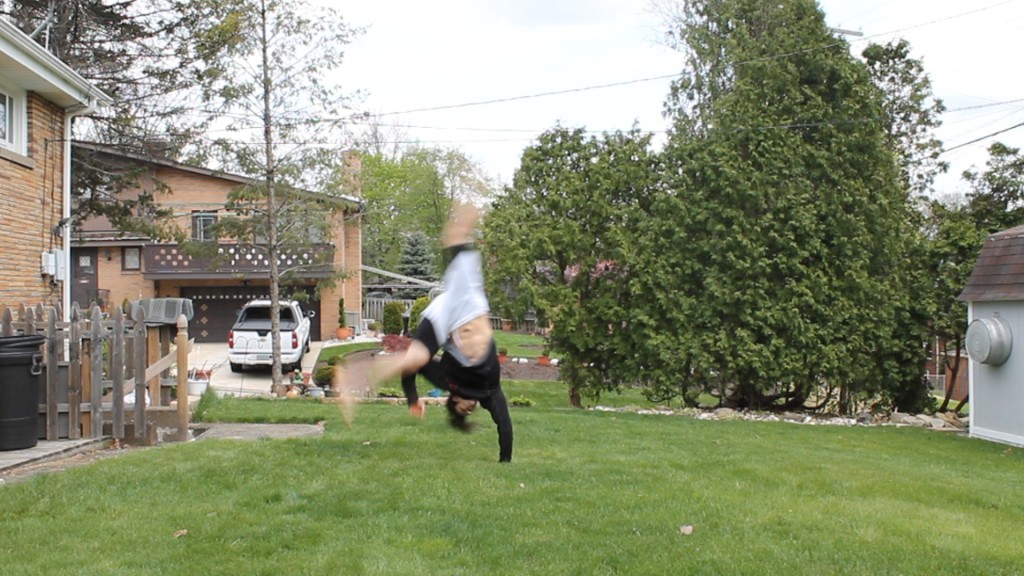
This is where this cartwheel gets funky to me. It looks ugly here. Could be because I’m doing it wrong, but I’m not sure that’s the case. In my opinion, because the second arm is the one planted for support, there’s a late torso turn over. Right now my shoulders aren’t turning over at quite the pace my hips want them to. This is just something that happens whenever I do this variation.
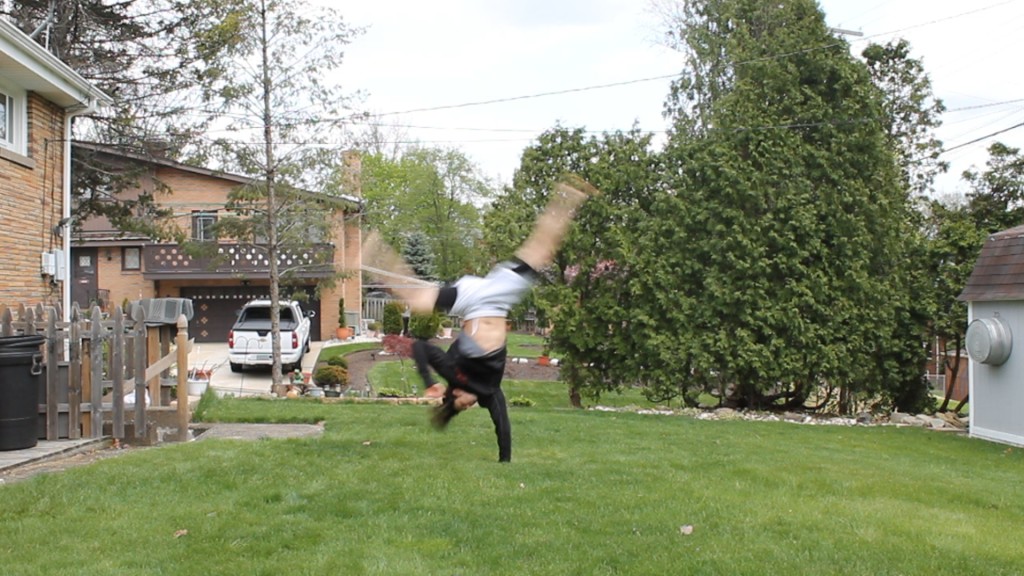
We start to straighten out here, but the focus goes back to that bent arm again. It needs to lead thatsame shoulder in turning my hips over, so it need to starting moving in a direction towards the camera.
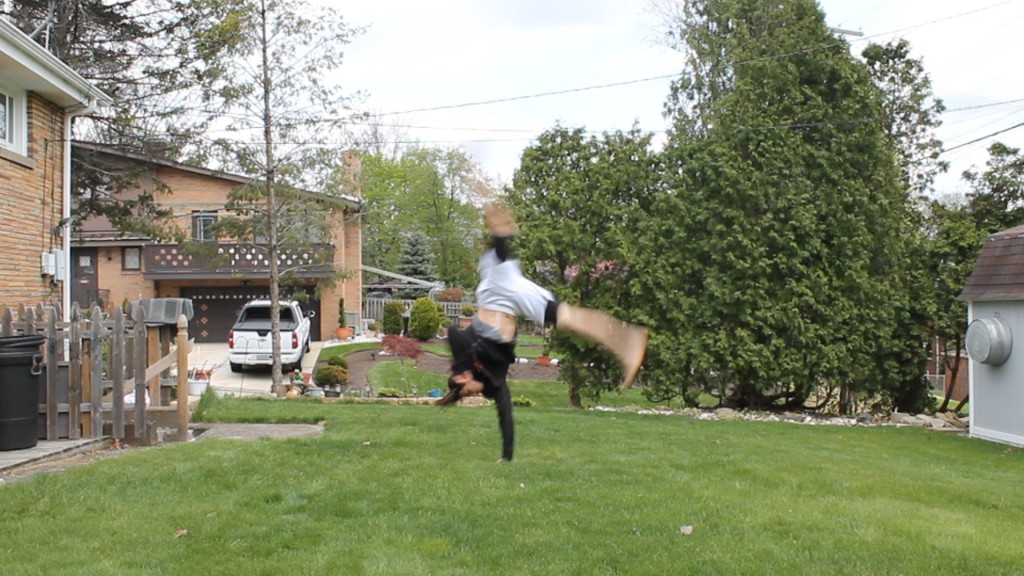
From a “closet to the camera” standpoint, my hand is now first — it’s in front of my face. This is a good thing because it’s what enables you to land square. Remember, just because you don’t touch the arm to the ground doesn’t mean it’s useless. What you do with that arm is important.
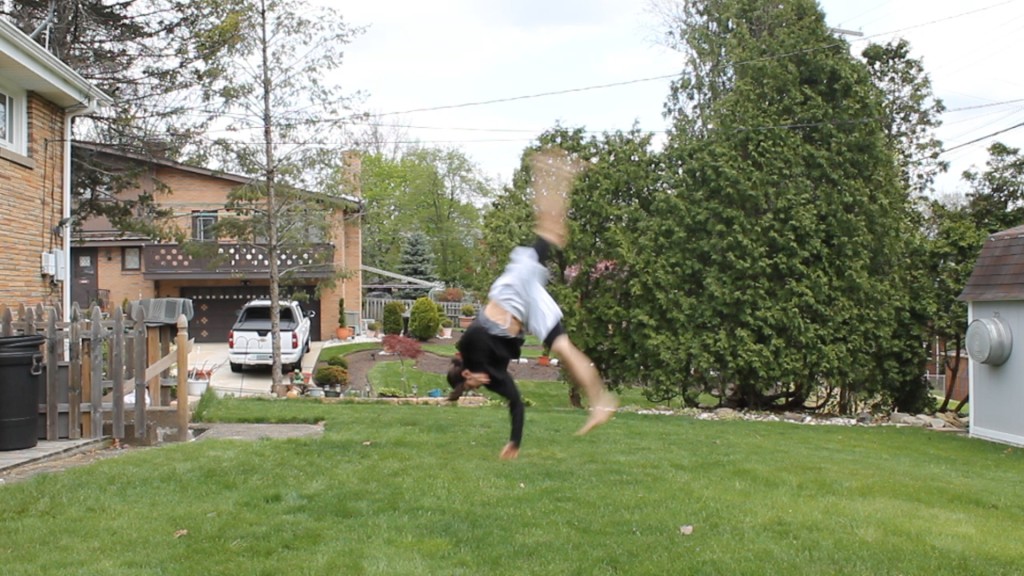
Don’t lazily release the planted hand. Just as with the free hand, you still need to make good use of the shoulder. When you release it, think of retracting your shoulder blades to get your body to a square position. Or doing an elbow strike to the outside of your body.
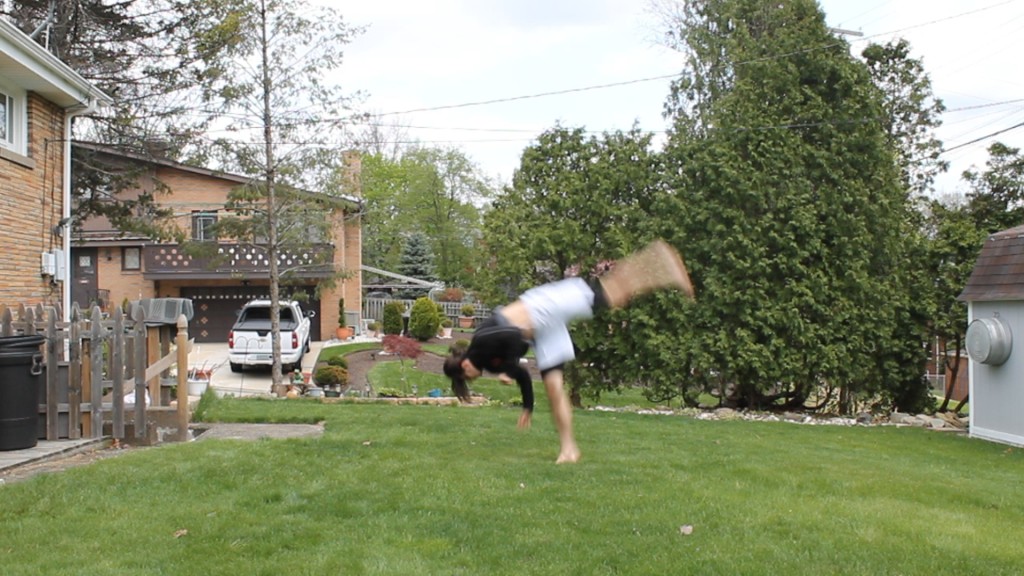
See how my torso closed since the last slide? That’s the last little bit of turn over from my right arm going to the outside.
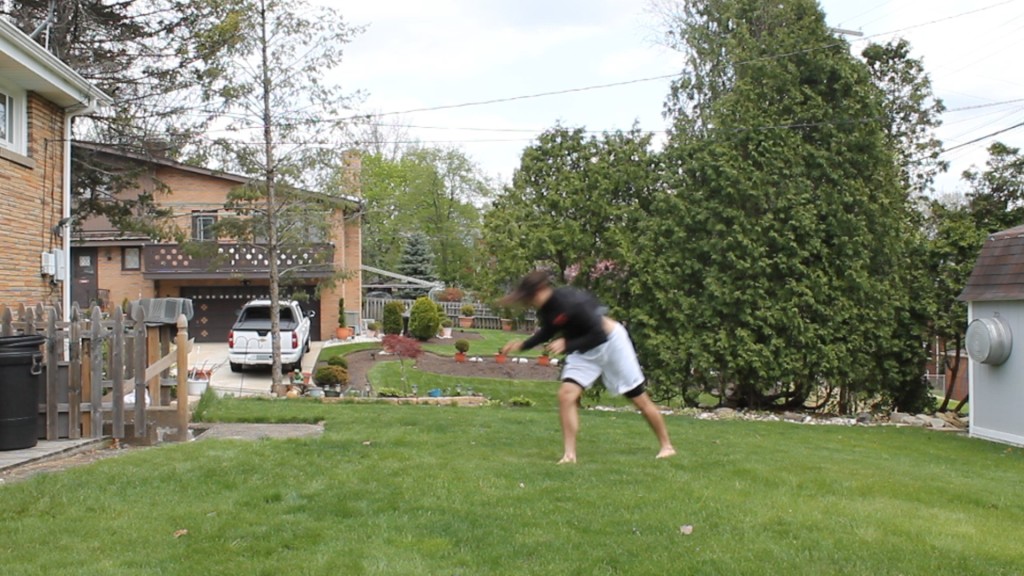
It’s actually mandatory that you walk around like a T-Rex after.
Recap cues:
- For the lifting leg, think about lifting hard and high.
- Act like your free hand is going to touch the ground — it doesn’t get to fall asleep.
- Elbow strike with your planted arm after it releases.
Troubleshooting:
Hand touching the ground? You might get into the habit of having your hand come down and touch the ground even if you don’t want it to. This is a normal pseudo-safety mechanism. You have to override it, and it might take a few crash landings to make it happen. You can also think about going down with fingertips or gently grazing the grass with your hand.
Landing on your side? If you’re getting one arm down, but just sort of toppling over onto your side, you’re probably either (a) giving up, or (b) not coordinating your body right. Keep practicing. It is harder than a normal cartwheel and does require a bit more spunk, effort, and coordination.
Landing to your side? If you’re landing with your shoulders open, you need to be more aggressive on the things that turn your torso over, one being the elbow strike on the planted arm after it releases.
Legs bent? That’s alright. Bent legs fix themselves with familiarity. When you get comfortable with the move you can consciously think about keeping them straight assuming you have the flexibility. If your static or dynamic flexibility sucks, maybe you should start there though.
Advanced variations:
Related tricks:
- Roundoff
- Aerial